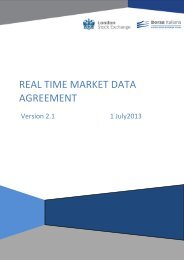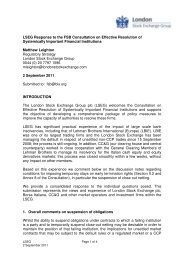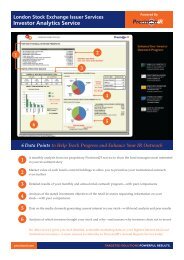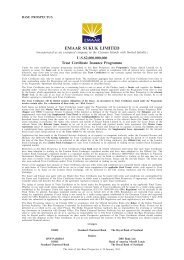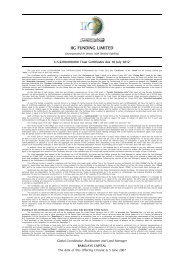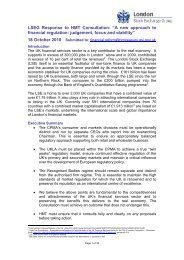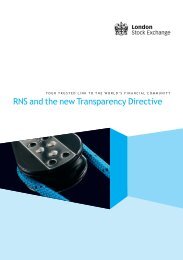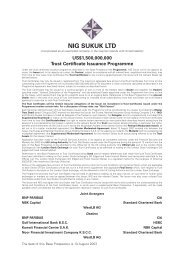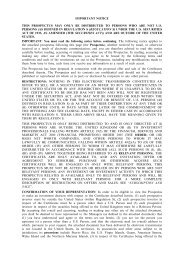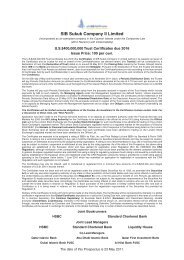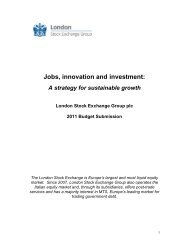Investor Relations - A Practical Guide - Investis
Investor Relations - A Practical Guide - Investis
Investor Relations - A Practical Guide - Investis
Create successful ePaper yourself
Turn your PDF publications into a flip-book with our unique Google optimized e-Paper software.
<strong>Investor</strong> <strong>Relations</strong> Websites<br />
Al Loehnis, Director, <strong>Investis</strong><br />
Standard-Bearer<br />
The continuing obligations for quoted companies<br />
to provide timely disclosure of price sensitive<br />
information and equal treatment of all shareholders<br />
have always been central to the regulatory regime.<br />
However it was not until the advent of the internet<br />
that companies had a practical means of fulfilling<br />
these.<br />
The role of the company website today goes far<br />
beyond meeting regulatory obligations. In many<br />
cases websites are the first touch point between<br />
an investor and a company and so act as a<br />
standard-bearer for the corporate brand and<br />
values. As standards have improved so<br />
expectations have risen and the quality of the<br />
website sends subtle but important signals to an<br />
investor: Does this look like a company that treats<br />
investor relations seriously Can I expect active,<br />
open communications going forward In a survey<br />
conducted by <strong>Investis</strong>, many institutional investors<br />
noted a correlation between a poor website and a<br />
company that was perceived to lack transparency<br />
or to have poor management.<br />
Good practice for investor relations websites<br />
All companies should treat their website as a key<br />
communications platform and recognise its<br />
importance to investors and other stakeholders.<br />
However, to some extent, expectations are rightly<br />
different for well-established, large international<br />
companies and young companies new to the market.<br />
For companies who are making the transition from<br />
private to public ownership through an IPO, the<br />
website is particularly important. You may have<br />
more people looking at your site over the course<br />
of two weeks than you will for the next two years.<br />
But in the run-up to an IPO, the demands on senior<br />
management time will be enormous. So it pays to<br />
think about it early and get a good framework of<br />
corporate information in place long before any<br />
announcements are made.<br />
All quoted companies should take advice as to<br />
what regulatory requirements their website needs<br />
to meet as there are various rules and guidance<br />
governing corporate information disclosure across<br />
a company’s website. For example, AIM<br />
companies are required to ensure that the<br />
information is disclosed in accordance with AIM<br />
Rule 26, which requires that each AIM company<br />
must, from admission, maintain a website on which<br />
certain information must be available free of charge<br />
and easily accessible from one part of the website.<br />
The table opposite sets out some guidelines on<br />
content and a typical structure that an investor<br />
relations website might follow, but more generally<br />
here are five key areas to give thought to when<br />
considering your investor relations website.<br />
60<br />
Building the <strong>Investor</strong> <strong>Relations</strong> Programme



